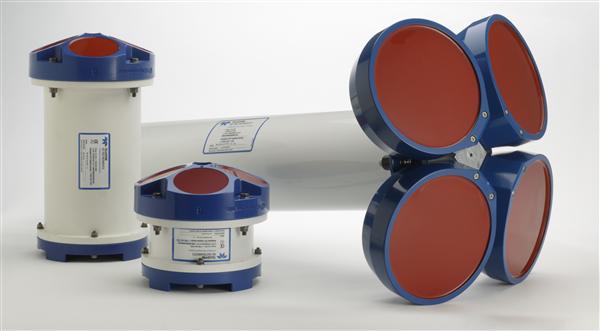Teledyne RDI ADCP
Market Leadership
 BlueZone Group introduced ADCP technology to the Australian market in 1989. Original forecasts were for sales of 10 to 20 instruments of the original designed ADCP with NarrowBand technology. When the power and adaptability of Doppler technology began to be fully exploited with the development of the newer Broadband signal processing technology and the introduction of the Workhorse series instruments the number of applications grew rapidly. There are now more than 500 Teledyne RDI instruments in-service in Australia and the reliability and performance of TRDI equipment is well demonstrated. BlueZone is proud to represent Teledyne RDI products and to be associated with a company that continues to develop and evolve technology for the benefit of customers in the field. View our Renewable Energy Application notes.
BlueZone Group introduced ADCP technology to the Australian market in 1989. Original forecasts were for sales of 10 to 20 instruments of the original designed ADCP with NarrowBand technology. When the power and adaptability of Doppler technology began to be fully exploited with the development of the newer Broadband signal processing technology and the introduction of the Workhorse series instruments the number of applications grew rapidly. There are now more than 500 Teledyne RDI instruments in-service in Australia and the reliability and performance of TRDI equipment is well demonstrated. BlueZone is proud to represent Teledyne RDI products and to be associated with a company that continues to develop and evolve technology for the benefit of customers in the field. View our Renewable Energy Application notes.
Depth of Experience
BlueZone supported may early adopters of Doppler technology and has built a deep experience in applications and advice to users. Some of the landmark projects supported by BlueZone sales include:
- The first current section across the Leeuwin Current (shipboard ADCP)
- The Sepik River outflow and an island wake nearby (shipboard and moored ADCPs)
- East Australian Current (EAC)-induced up-wellings (shipboard ADCP)
- A year-long mooring north of Rottnest showing the Leeuwin and Capes Currents and wind forcing — down to sea breeze time scales (shipboard ADCP)
Service and Support
BlueZone Group engineers and technical staff have extensive experience in service and support of ADCP products. Many issues can be resolved with workshop services provided from our facilities in Newcastle, Melbourne and Perth. Our strong links to technical staff at Teledyne RDI ensure that we can get you the correct advice you need for new applications and upgrades. View our Renewable Energy Technical notes.
Contact us for further advice and support for the following Teledyne products:
- Workhorse ADCP
- Explorer DVL
- CobraTac Diver Navigation
- RiverRay ADCP
- RioGrande ADCP
- Channel Master ADCP
- StreamPro ADCP
- Sentinel V ADCP
- Citadel CTD
Acoustic Doppler Current Profilers
Widespread Applications Stem from Diverse Measurement Capabilities
Rather than a spinning propeller, the Acoustic Doppler Current Profiler (ADCP) – like dolphins and bats – uses sound to explore its environment. Operating underwater, the method works like hand-held radars used by police to catch speeding motorists.
A sound burst is emitted by the ADCP along beams angled downward. Echoes are returned due to scattering off particles carried by water currents. A second burst can be used to track movement over the seabed. By analysing these sound echoes, the ADCP makes four different measurements at once.
- Speed and direction of water currents at many levels through the water depth–a ‘current profile’
- Spatial distribution of sediments or plankton carried by the water (e.g., a sediment plume)
- ADCP’s speed-over-ground and path of travel (revealed by echoes scattered from the bed)
- Range to boundary. This can be water depth (like an echo sounder) or, when the ADCP’s beams are directed upward, range to surface. The latter provided a new way to measure surface waves.
This collective of data types used individually and together permits a single ADCP to make a diverse range of measurements.
Or checkout these websites for ADCP magazine articles and Case Studies:
For Magazine Articles: http://www.drpeetz.com/MagSelex/
For Case Studies: http://www.drpeetz.com/CSselex/
Measuring Coastal Currents Using ADCPs on AUVs
Revealing Transport and Spread of Effluent and Water Properties
The invention of the ADCP revolutionised studies of coastal circulation worldwide. Working from moving vessels, ADCP operators measure continuous transects of full-depth current profiles, often around consecutive circuits throughout a tidal cycle. Autonomous underwater vehicles (AUVs) can replace boats in coastal surveys, observing both flow fields and water properties continuously and concurrently—for instance, while tracking effluent plumes or river discharge.
Vehicles fitted with Teledyne RDI DVLs carry an embedded ADCP, which can measure coastal currents at many depths simultaneously—above and below the vehicle if a dual head is installed—while the AUV flies at a constant depth.
Read More:
